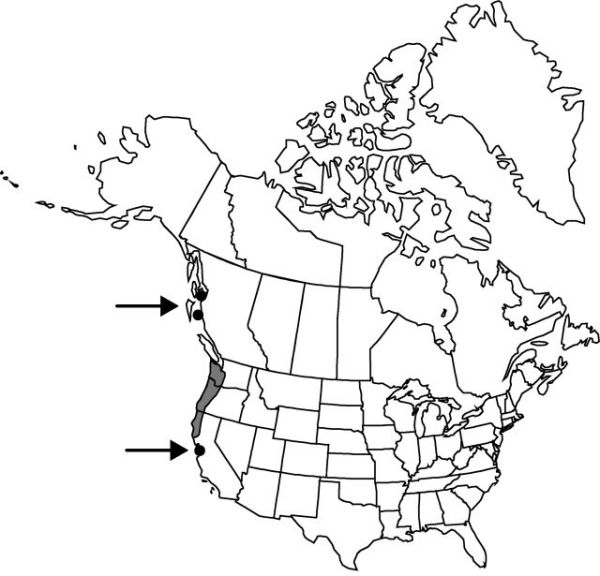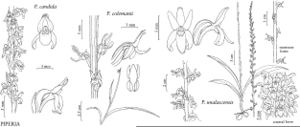Piperia candida
Lindleyana 5: 207, figs. 1H–N, 2. 1990.
Plants 10–60 cm. Stems uniform toward base, 0.7–3.5 mm diam. distal to leaves; bracts 2–5(–10). Leaves prostrate to erect-spreading; blade 5–18 × 1.1–3.5 cm. Inflorescences sparsely flowered, ± secund, (2–)10–30 cm; rachis shorter than or equal to peduncle; bracts 3–10 mm. Flowers white, fragrance faint, harsh to honeylike; sepals oblong-elliptic, 1.8–3.5(–4.5) × 1–1.9 mm; dorsal sepal projecting to ± recurved; lateral sepals deflexed, ± twisted; petals usually projecting forward and ± connivent, white, midvein faintly green, asymmetrically lanceolate, 2–4 × 1 mm; lip recurved, triangular-ovate, (1.5–)2–3(–4 mm) × 1–2.8 mm; spur curved, tapered, 1.5–4 mm; viscidia broadly elliptic to ovate, 0.3–0.6 × 0.2–0.4 mm; rostellum ± elongate. Capsules 5–9 mm. Seeds cinnamon brown. 2n = 42.
Phenology: Flowering late spring–summer (May–Aug).
Habitat: Conifer and mixed evergreen forests, chaparral, sometimes on serpentine soils, not more than 150 km from coast
Elevation: 0–1500 m
Distribution

B.C., Alaska, Calif., Oreg., Wash.
Discussion
The flowers in Piperia candida are more completely white and more ephemeral than in any other member of the genus.
Selected References
None.
